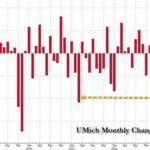

As the automotive industry is transitioning toward greener energy, electric vehicles incentives and rebates have swept the nation. However, drivers are reporting concerns about trading in their gas-powered vehicles for a more sustainable alternative.
According to a recent poll from Ipsos and Yahoo Finance, 57% of respondents said they would not likely purchase an EV as their next car, citing high costs, limited driving range, and few charging stations as their top reasons.
SUNUNU ANNOUNCES NEW TASK FORCE TO RAMP UP SECURITY AT BORDER WITH CANADA
Here is a look into some of the primary reasons why drivers are hesitant to purchase EVs.
High purchase price and expensive to repair
One of the most significant deterrents for potential EV buyers is the higher up-front cost compared to traditional vehicles that run on an internal combustion engine, as well as costly repairs and maintenance.
The average transaction price of a new EV is $50,683, according to Kelley Blue Book data, which is down significantly since September 2022, when the average price came in at $65,295. But EVs typically do cost more upfront, according to an AlixPartners report last year. The raw materials needed to manufacture an EV are 125% more costly than those needed to produce a comparable internal combustion engine vehicle.
The tools needed for EV repairs often can make maintenance and are often more costly, another factor discouraging consumers. Recently, Edinburgh Live conveyed a story about a couple who reportedly received a repair bill of £17,374 ($21,166 USD) after driving their Tesla through the rain in the Scottish capital.
The Washington Examiner reached out to Tesla to discuss the average cost of repairing rain damage to their vehicles.
Lack of charging stations
Another major concern for those considering EVs is the limited availability of charging stations across the United States. The charging station shortage can be attributed to the high cost of installation and maintenance. California has long been a leader in overall EV sales, reporting more than 900,000 sales in the first quarter of 2023. However, The Golden State recorded only 3.5 public charging ports per every 100 EVs, according to Automoblog in September.
According to the Biden administration, there are currently more than 135,000 public EV chargers across the country as of this spring, and the amount of available charging ports has increased by 40% since President Joe Biden took office.
Earlier this year, Biden announced large new investments to go toward EV charging equipment, hoping to build 500,000 EV chargers by 2030.
“We’re establishing common, universal standards for EV charging stations just like the ones for gas stations, so that recharging an EV away from home will be as predictable and accessible as filling up a gas tank,” Transportation Secretary Pete Buttigieg said in February.
Limited driving range
A prevalent concern among prospective EV owners is the limited driving range compared to some traditional gas-powered cars. The median range for gasoline vehicles was 403 miles, while the average driving range of an EV was 234 miles, according to the Department of Energy, using data from 2021.
CLICK HERE TO READ MORE FROM THE WASHINGTON EXAMINER
“There are already EV models offered for the 2022 model year achieving a maximum range of more than 500 miles. As more long-range EVs become available, the discrepancy in range between gasoline-powered vehicles and EVs is likely to continue to narrow,” the DOE said.
While EV driving ranges have been steadily increasing, many consumers are still hesitant due to driving long distances without frequent recharging stations.





